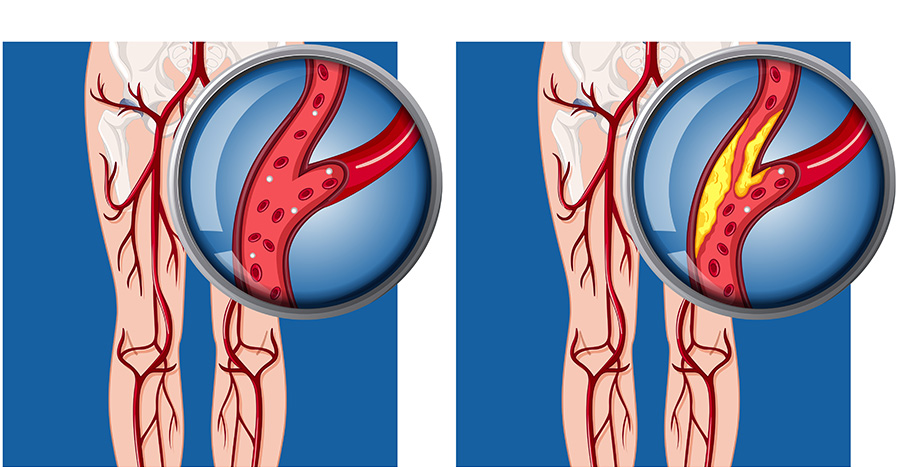Peripheral artery disease (PAD) is the narrowing or blocking of the peripheral arteries in various critical regions of the body like the legs, stomach, arms, and head. It occurs due to the widespread accumulation of fatty deposits in the arteries (atherosclerosis) and results in reduced blood flow to the limbs, heart, and brain.
Symptoms of Peripheral Artery Disease
- Painful muscle cramping in the hips, thighs, or calves while walking, climbing stairs, or exercising
- Pain that usually comes on with exercise and stops at rest
- Leg numbness or weakness
- Wounds that heal poorly
- Legs are cooler than the arms
- Shiny skin over the legs
- Loss of hair on the legs
- Fainter pulse in the feet
- Poor nail growth
- Erectile dysfunction, especially in men with diabetes
Why is it Important to Treat Peripheral Artery Disease?
PAD causes painful symptoms and if left untreated, it can lead to the loss of a leg. Moreover, PAD patients are at a higher risk of developing other dangerous conditions like coronary artery disease, stroke, and heart attack. Due to this, the American Heart Association encourages people and doctors to discuss every pain symptom to ensure early diagnosis and treatment.
Peripheral Artery Disease Treatment
Diagnosis of PAD requires a thorough physical examination, an Ankle-brachial index (ABI) test, ultrasound, angiography and blood tests. Its treatment may include lifestyle changes, medications (to manage the causative disorders like hypercholesterolemia, hypertension, diabetes etc.) or surgery.
Surgery is generally required in some severe cases
- Angioplasty: It is a procedure in which a catheter with a small balloon on its tip is threaded through a blood vessel to the affected artery. On reaching the artery, the balloon is inflated so that artery can be opened and the blockage is flattened. A mesh framework called a stent may also be inserted to keep it open.
- Bypass surgery: This involves the creation of a graft bypass using a vessel from another part of the patient’s body or a blood vessel made of synthetic fabric to allow blood to bypass the blocked or narrowed artery.
- Thrombolytic therapy: This is an injection of a clot-dissolving drug into the artery at the point of the clot to break it up and improve blood flow.
Don’t hesitate to contact Dr. Raymond M Shaheen to make an appointment for a physical exam.




